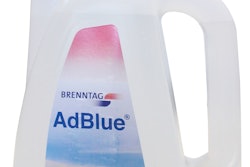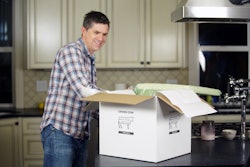Traditional warehouses require the movement of large pallets by forklift (with relatively few employees). An e-commerce warehouse, on the other hand, may involve hundreds or thousands of SKUs and many employees picking products to fulfill small orders in the shortest amount of time possible.
Adrian Kumar, Vice President of Solutions Design with DHL Supply Chain, discussed the emerging role of collaborative robots and warehouse picking strategies at the 2019 WERC Annual Conference today in Columbus, OH.
Kumar said a traditional manual warehouse cart solution usually involves pushing a cart through the warehouse aisles, using a pick-assist device such as a wearable RF Gun to pick multiple orders at once, and then sorting the corresponding order at a later time in a pack-out area. This solution has low capital cost and is flexible, but relies on the productivity of the picker and their skill with the device, as well as the possibility of a long cycle time to complete.
Due to market changes such as the exponential growth of e-commerce; customers who have increased expectations for the speed of fulfillment; and a shortage of skilled workers combined with an aging society, automation has become more appealing - even to smaller operations. And as barriers such as price, flexible solutions and the capabilities of robots improve, more warehouses are considering robotic picking as a solution.
A simple robotic picking strategy is a cart solution – either with “follow-me” or “lead-me” carts. Follow-me carts follow the picker as they work, while lead-me carts remove the pick-assist device from the operation by leading the picker with navigational guidance and pick-task information. Both of these types of robots then travel automatically to the pack-out area.
A more involved robotic picking strategy is a zone solution:
- Shuttle robots move orders from one zone to the next, while the picker stays in their zone and uses a pick-assist device to fulfill orders brought by the robots.
- Swarming robots move the orders to the location an item is needed from, while the picker picks items to the robot via a display. Kumar said DHL has seen productivity and cycle-time advantages with this approach.
- Retrieval robots bring items in a bin to a picker at a put-station, where the picker will transfer the items to the order.
Kumar said these robotic picking strategies have varying degrees of operating vs. capital costs, with higher capital costs generating higher productivity (at a diminishing rate). While manual picking methods have low capital cost, labor costs are higher. Swarming robots or retrieval robots have the highest capital costs, with lower associated labor costs.
Some of the features of robotic picking strategies include maneuverability, change of sequence, and communication. Robots are able to leapfrog each other in the same aisle, choose the shortest travel distance and maneuver around people and obstacles instead of waiting. Instead of picking items aisle-by-aisle, they can also be programmed to pick in the order the items will be unpacked or placed in a store. Communication with the software allows the picker to easily determine where the robots are.
Other possible robotic solutions include sorting robots and automated robotic picking - an area Kumar said is the next evolution in robotics. In the right circumstance, sorting robots can replace traditional sortation equipment while providing a scalable solution. And though automated robotic picking is still being improved upon, the ability to sort and pick through items of varying sizes and weights is beginning to grow as companies such as Kindred offer human-assisted robotic arms that incorporate AI to improve functionality as the robot learns from the human.
To learn more about WERC, click here.
Learn more about robotic solutions at PACK EXPO Las Vegas, September 23-25.



























